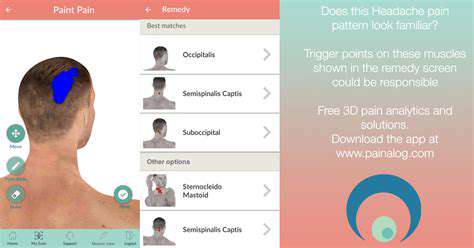Common Causes of Shooting Pain at the Back of the Head

Muscle Tension and Strain
Shooting pain at the back of the head can often be attributed to muscle tension and strain. Poor posture, especially when sitting for extended periods, can lead to tightness in the neck and shoulder muscles. This tension can radiate to the base of the skull, resulting in discomfort and pain.
Identifying the source of muscle tension is key. Activities such as long hours at a computer, improper sleeping positions, or even stress can contribute significantly. By addressing these factors and incorporating regular breaks, stretching exercises, and ergonomic adjustments, one can alleviate symptoms.
If muscle tension is a recurrent issue, consider seeking professional help. A physical therapist can provide tailored exercises and techniques to relieve tension and improve posture. Additionally, relaxation techniques, such as yoga or meditation, can also be beneficial in managing pain related to muscle strain.
Medical Conditions and Other Factors
Sometimes, shooting pain at the back of the head may be a symptom of underlying medical conditions. Conditions like migraines, cluster headaches, or even cervical spondylosis can cause pain that feels sharp or shooting. Understanding the nature of your headaches and their triggers is vital for effective management.
In some cases, nerve compression, such as that caused by herniated discs, can lead to shooting pain in this area. Consulting a healthcare professional is crucial for an accurate diagnosis and appropriate treatment plan. They may recommend imaging tests or other assessments to determine the root cause of the pain.
In addition to medical conditions, lifestyle factors such as dehydration, lack of sleep, or a poor diet can exacerbate headache symptoms. Paying attention to these areas and making necessary lifestyle changes can significantly improve overall well-being and reduce the frequency of shooting pain.
Remedies and Treatment Options

Understanding the Causes of Shooting Pain
Shooting pain at the back of the head can be attributed to various underlying issues. Some common causes include tension headaches, nerve compression, and muscle strain. Identifying the exact source of the pain is crucial for effective treatment. Conditions such as cervical spondylosis or occipital neuralgia may also lead to discomfort in this area.
Another contributing factor may be the body’s posture. Poor alignment can place undue stress on the muscles and nerves in the neck, causing radiating pain to the back of the head. Recognizing these triggers is vital for prevention. Regular stretching and proper ergonomics can significantly help alleviate pain.
Migraine headaches can also cause severe pain that radiates to the back of the head. These headaches are often accompanied by other symptoms such as nausea and sensitivity to light. Understanding the pattern and frequency of these headaches can aid in managing them.
Lastly, stress and anxiety can lead to muscle tension in the neck and shoulders, pushing the pain towards the back of the head. Finding effective stress management techniques can benefit overall well-being and reduce pain episodes.
Home Remedies for Relief
There are several home remedies that can provide relief from shooting pain at the back of the head. Applying a cold pack or a warm compress can help reduce inflammation and relax tense muscles. This simple approach can be integrated into daily routines.
Furthermore, staying hydrated is essential, as dehydration can often lead to headaches. Consuming adequate fluids throughout the day helps maintain your body’s overall function and reduces the likelihood of pain. A well-balanced diet can also play a vital role in minimizing headache triggers.
Practicing relaxation techniques such as yoga, meditation, or deep breathing exercises can significantly reduce stress-related pain. These techniques can help promote relaxation and improve focus. Incorporating these practices into your daily life can lead to long-term relief.
Lastly, ensuring proper neck ergonomics, especially for those who spend long hours at a desk, can be a preventative measure. Regular breaks, combined with stretches for the neck and shoulders, can help alleviate discomfort and maintain good posture.
When to Seek Professional Help
While home remedies can be effective, knowing when to consult a healthcare professional is essential. If shooting pain at the back of the head persists or worsens, it may indicate a more serious condition that requires intervention. Particularly if accompanied by neurological symptoms, professional advice is crucial for accurate diagnosis.
It’s advisable to seek medical attention if the pain is sudden and severe, especially if it feels different from typical headache pain. A thorough medical evaluation can rule out conditions such as stroke or meningitis.
Chronic pain that continues for an extended period may require specialized treatment. In such cases, a healthcare professional can suggest imaging tests or other diagnostic procedures to identify the cause behind the symptoms.
Additionally, if you notice other concerning symptoms such as vision changes, balance problems, or persistent headaches, it is important to get evaluated immediately. Early intervention can lead to better management of underlying conditions.